Creative ruts are sneaky—they show up just when you need to get things done. After trying every trick in the book, I’ve found these five AI prompts are the only ones that reliably jolt me out of a standstill and get me making things again.
5
Brainstorm for Creative Ideas
When I’m going through writer’s block or struggling to find ideas for my next photo shoot, I find that I need someone to bounce ideas off. If no “human” is available immediately, I turn to AI, and it’s a great way to move forward quickly without waiting for someone to pull me out of my rut.
I establish tone and expertise in the prompts to get the best out of AI.
For instance, I used the below prompt when I couldn’t find inspiration for a spaghetti photoshoot. Of course, I followed my usual techniques, including creating a mood board and researching lighting, colors, and other key elements. But I tend to be fixated on a particular style or technique.
You’re a creative art director with decades of experience. Give me some ideas to take photos of spaghetti with my phone.
With AI, I get different ideas and perspectives, like abstract and geometric approaches. I’m always focused on the final product. It’s surprising and new for me to take photos of raw ingredients in an artistic way.
It’s also interesting how the prompts can come in handy during dynamic situations, such as wildlife photography. While I may not be able to place different elements and compose a scene in the wild, the suggestions and ideas are in the back of my mind, and I’m better equipped to use the changing situations to my advantage.
With the experience of an award-winning wildlife photographer, give me some unique ways to photograph a mute swan.
If you’re just documenting wildlife or nature at a particular moment, this may not be a big deal. But if you want to create artistic compositions, these brainstorming sessions are invaluable.
Moreover, I’ve used these types of prompts to aid in my writing and also, as a teacher, to come up with creative and engaging activities.
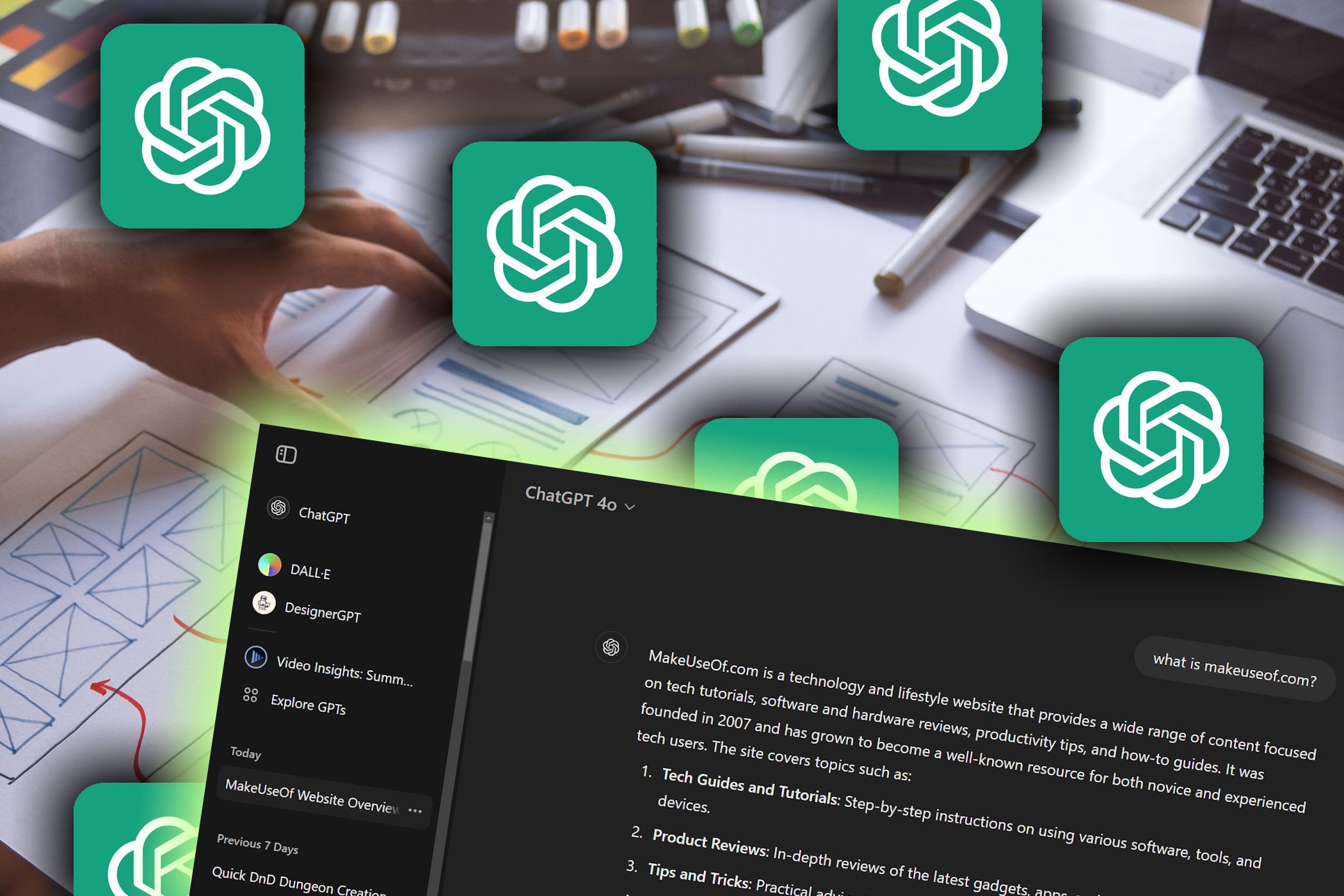
Related
These 6 Prompts Make ChatGPT My Perfect Microlearning Tutor for Any Topic
Use ChatGPT prompts to master topics in just minutes a day.
4
Accelerate Your Research
As creatives, we sometimes prefer to settle for the status quo, but innovation happens only when we break the routine and try new things. For instance, I’d use a familiar type of lighting for all my photos, or I’d go to the same place and take the same kind of pictures. You need a boost of inspiration to see things in a new light.
The key thing to remember is to give clear and detailed prompts to get the desired results.
You can conduct your own research, but it requires time and effort. This is where AI shines—it researches for you and presents the data in a concise, digestible manner. You don’t have to spend hours watching YouTube videos or pouring over websites.
What inexpensive equipment do I need for dark moody food photos with my phone?
In my example above, I got the necessary information in mere seconds. If I’d conducted the lighting research on my own, I’d have been exhausted from reading, watching videos, and cross-checking prices on various e-commerce websites that I’d have given up. With AI, I immediately gained insight into the budget and feasibility.
With my nature photos, I can quickly research the location and species details. I’ve to give all the necessary information like season and locality to get the specific details.
I want to photograph hummingbirds. Give me some parks in the GTA where I have high chances of photographing them in June and July.
The overview is handy to refer back to later. And, I’m impressed by the specific tips, like going mid-morning and finding orange and red flowers.
3
Simplify Technical Concepts
Even though you’re an experienced creative with years of experience under your belt, breaking down the technical concepts can help you see things differently. For example, as a photographer, I have a thorough knowledge of color theory and design principles, but I rarely apply them when composing a scene.
With ChatGPT or Claude breaking it down for me, I can confidently apply these concepts, make mistakes, and refine them to get an outstanding result. In other words, working with AI encourages me to step out of my comfort zone and be more mindful of my choices.
Feel free to have a conversation with AI! Add tweaks and details to refine the answers.
I photograph nature and wildlife at dawn and dusk. I look for the warm golden color tone in my photos. It elicits a pleasant mood, surely, but I found myself stuck there. Taking photos any other time was a no-go. However, you can capture beautiful images at any time of day. It may take some patience, workarounds, and adjustments to achieve this, but the photos will be a welcome break from similar-looking ones.
How do I create color harmony in wildlife photos?
I may or may not follow the AI’s recommendations, but they are crucial for building knowledge and skills to break out of boredom and improve my craft.
You can use these prompts to simplify the concepts and make your life easier in any creative field. Are you unsure about the fonts that will work well together in your design? AI is your knight in shining armor.
What fonts are suitable for masthead and tagline for a macro photography zine I’m creating?
Claude just gave the names of the fonts here, and I had to tweak my prompt to understand the typeface and how to effectively use it.
Have AI create a downloadable checklist to significantly accelerate your workflow. It can include color and font choices, design principles, audience, and storyboarding ideas. I also use it for my writing work to understand the different styles and tones.
2
Visualize Designs
Whether I’m trying out different compositions for a photo or creating a design, storyboarding is an essential part of my creative process. And AI is an integral part of this now. I had previously done this manually in Canva or Photoshop, and it was tedious, time-consuming, and uninspiring.
It’s essential to keep your brainstorming, research, and storyboarding in the same chat so that the AI can learn and refine its suggestions. It is not a good idea to use a new chat and break up the thoughts.
I’ve recently used ChatGPT to plan a layout for a photo exhibition. I felt that plainly displaying in a linear fashion was uninteresting. I provided the dimensions and photo of the room, and it generated layout and sizing ideas.
Help me create a mockup for the exhibition in a 13 X 6.7 feet room. I will use 8 images, ideally in 14 x 11″ size with one central image 24 x 16″
My exhibition was held in a library, and I could only access the exhibit room during working hours. It would have been disruptive to do all this physically, and I’m grateful that AI could do it for me digitally.
I not only streamlined my creative process with AI, but it also helped me, as a teacher, explain creativity and innovation to others.
How to take creative risks? Explain this visually to a teenage student.
The below example is easier to understand than telling the students to ‘see differently’ or ‘take risks.’
1
Edit for Different Moods and Audiences
When I edit my writing or photos, I almost always do it in a particular style. I’m making it a practice to check with Claude and ChatGPT to show different editing styles.
As a visual artist, using these prompts nudges me to push boundaries and enhance my art. At the same time, I don’t follow or copy everything the AI says. I use it as inspiration or a starting point to explore further and find my own voice.
If you don’t understand the different styles, specifically ask for a visual reference.
With my photos, I upload one image from a session and ask about different editing styles possible. It usually gives a handful of options. I try a few different options. Even if the editing styles don’t fit, I get familiar with them and use them for future sessions.
How can I edit this photo for [specific mood]?
I’ve never tried the vintage, film look or dramatic, edgy look in my nature photos. And I’d never have thought about them but for Claude’s recommendation.
I asked Claude to show me how to edit in vintage style with this prompt.
Can you edit this in a vintage film look?
Unlike ChatGPT, Claude will not take your image and edit it. But it gave me detailed step-by-step instructions to follow.
As an artist, it’s understandable if you’re reluctant to use AI. I was not very keen during the initial days. However, I’m including it more and more now after I’ve learned its potential. More importantly, I use it responsibly—it’s never a replacement for my thinking. I keep it as my assistant to save time and bring out my potential as an artist.
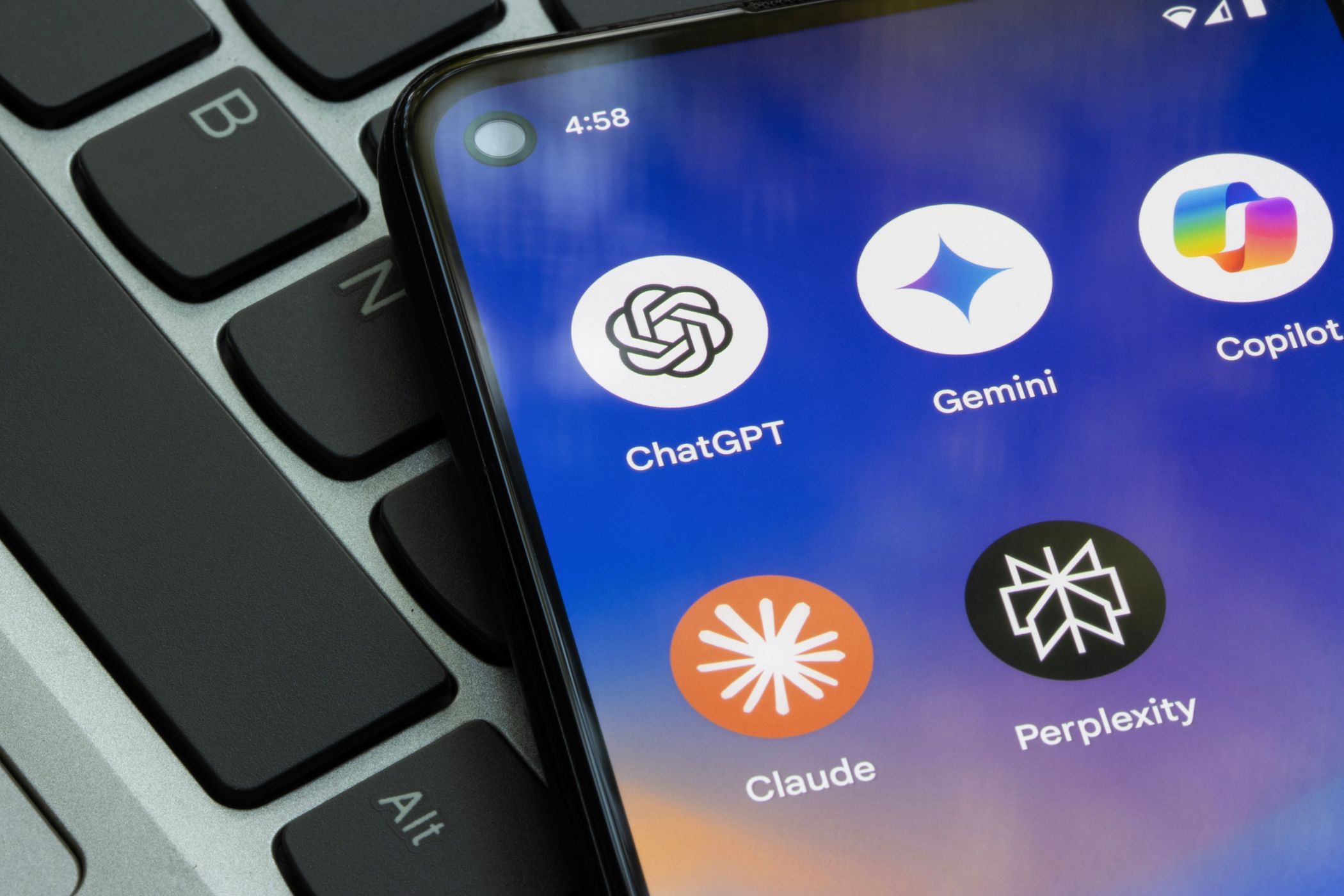
Related
How I Use Different AI Tools Together (and How You Can, Too)
You can quickly build up a productive workflow using different AI tools.
I work with both ChatGPT and Claude, depending on the subject. Claude always lists its sources, making it suitable if you want to do further research. ChatGPT is my preferred tool for visualizing mockups and storyboards, as well as creating downloadable files. You don’t have to limit yourself to one AI tool—try out different models to get the maximum benefits.


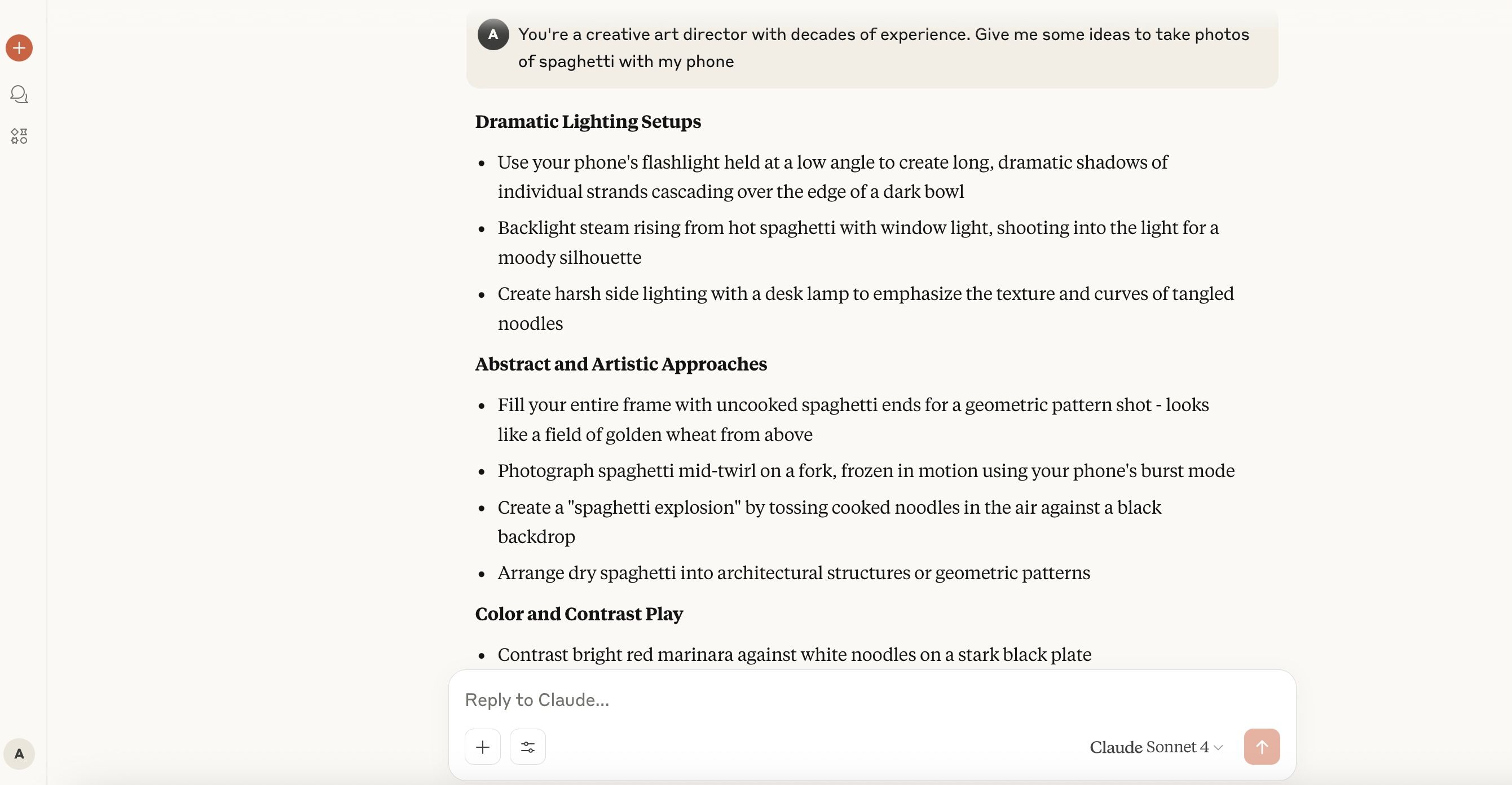
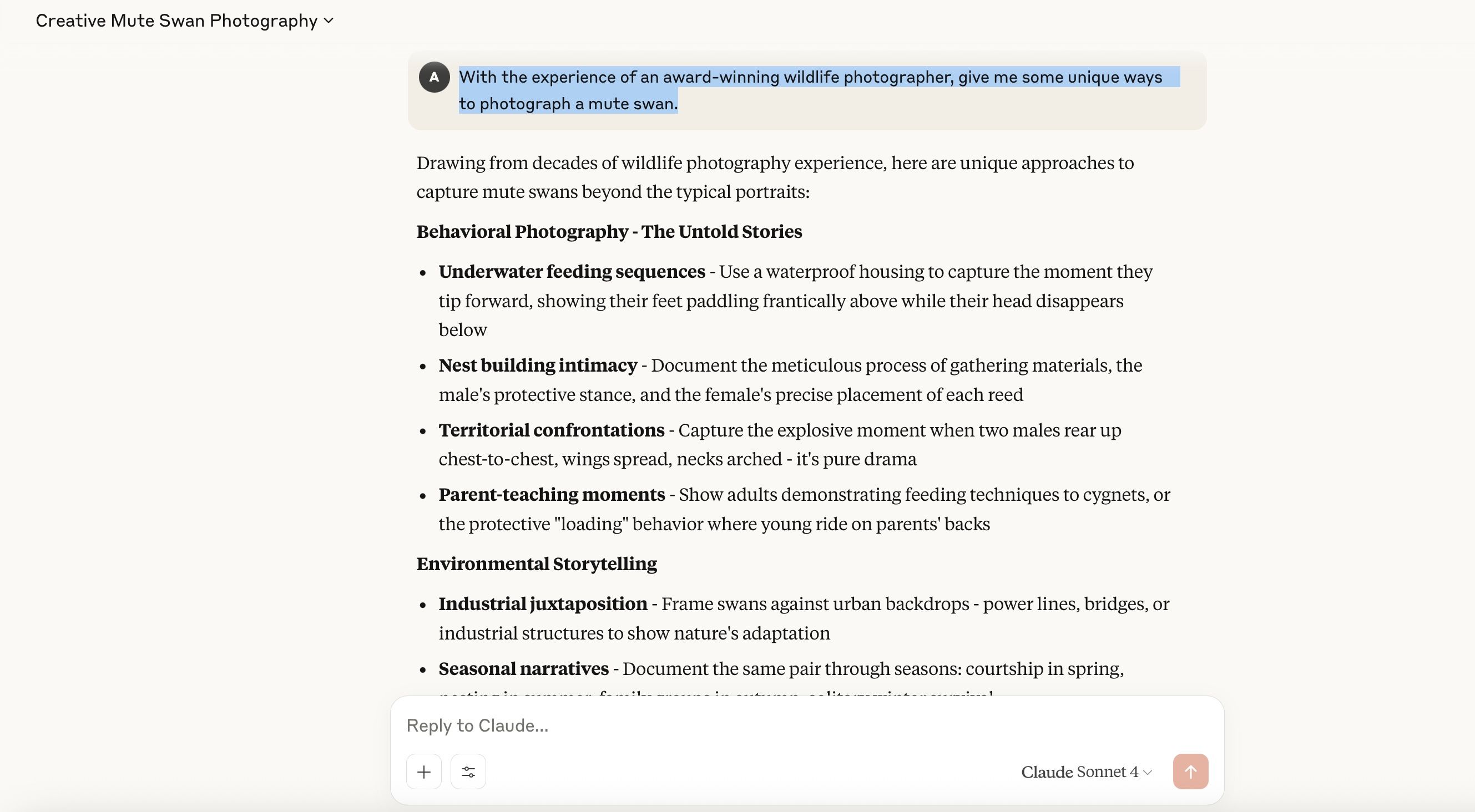
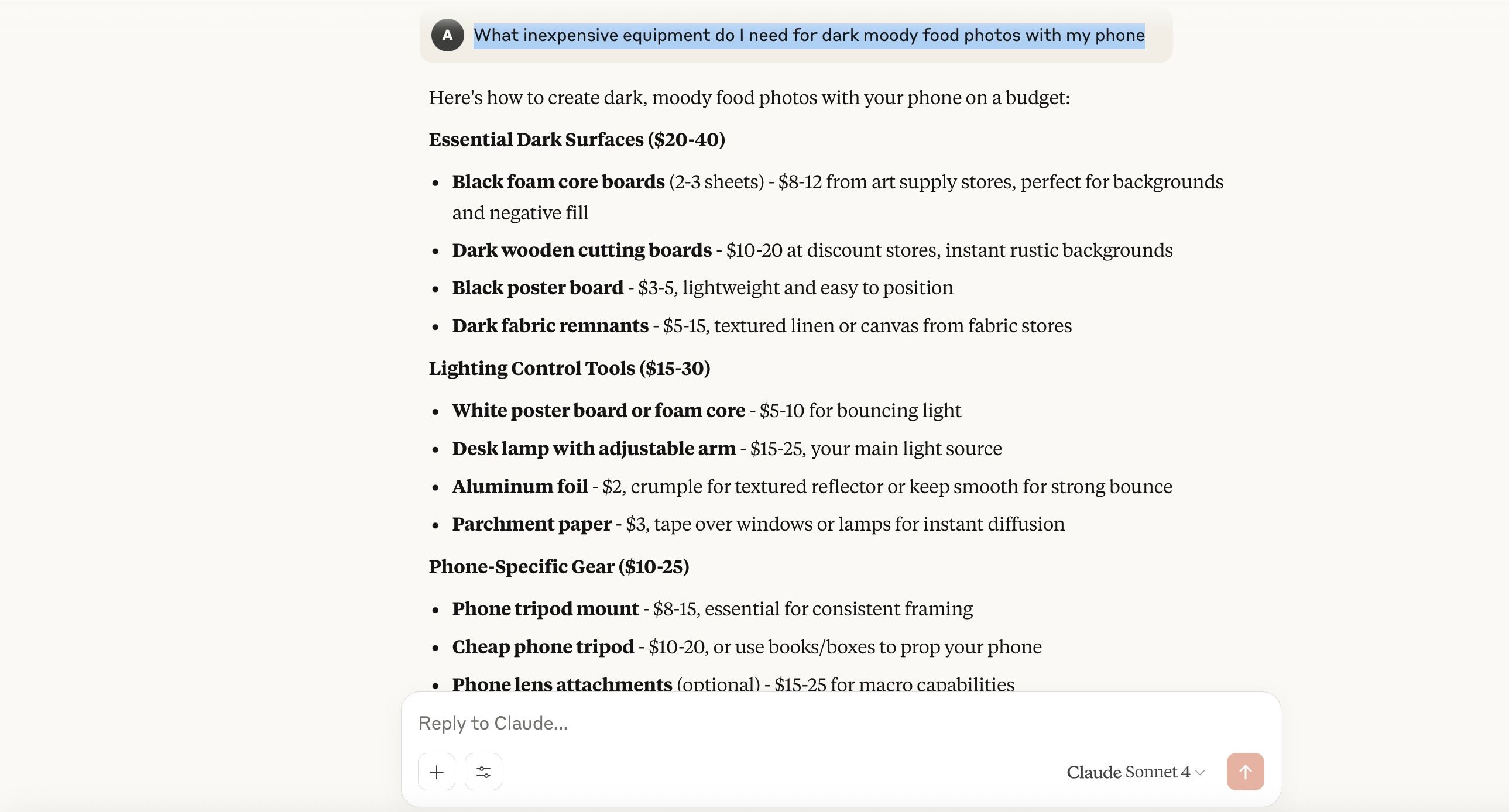
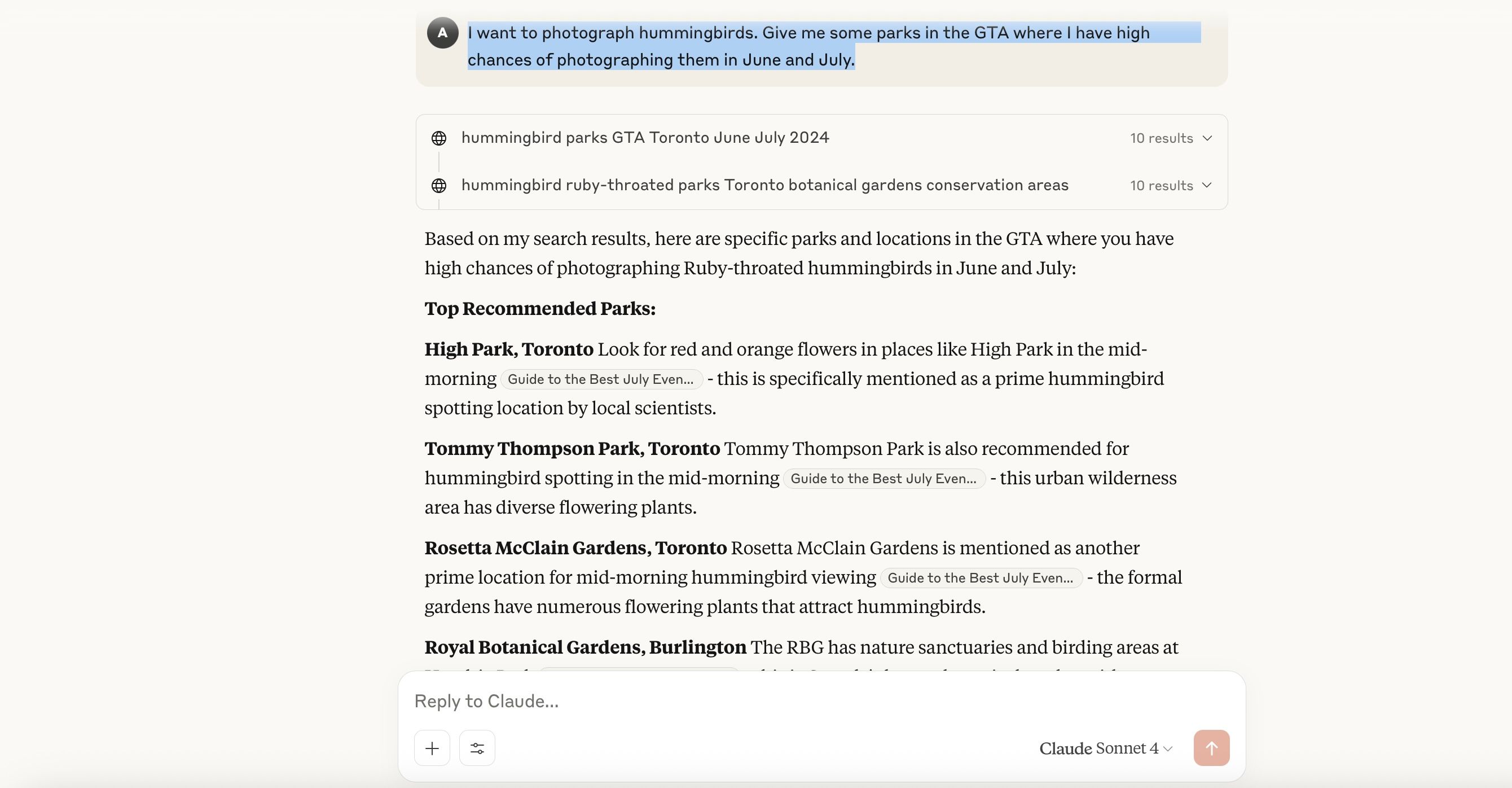
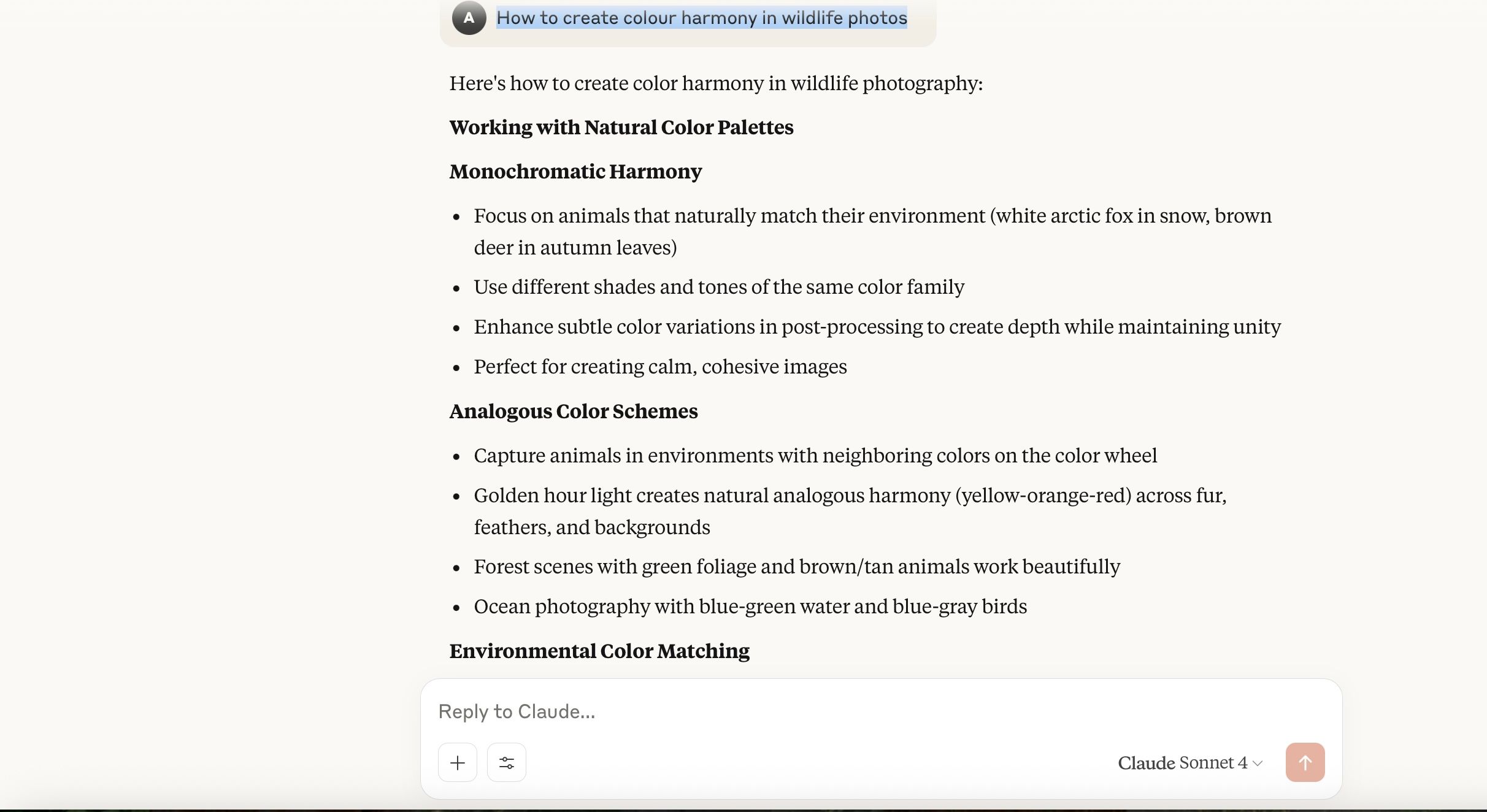

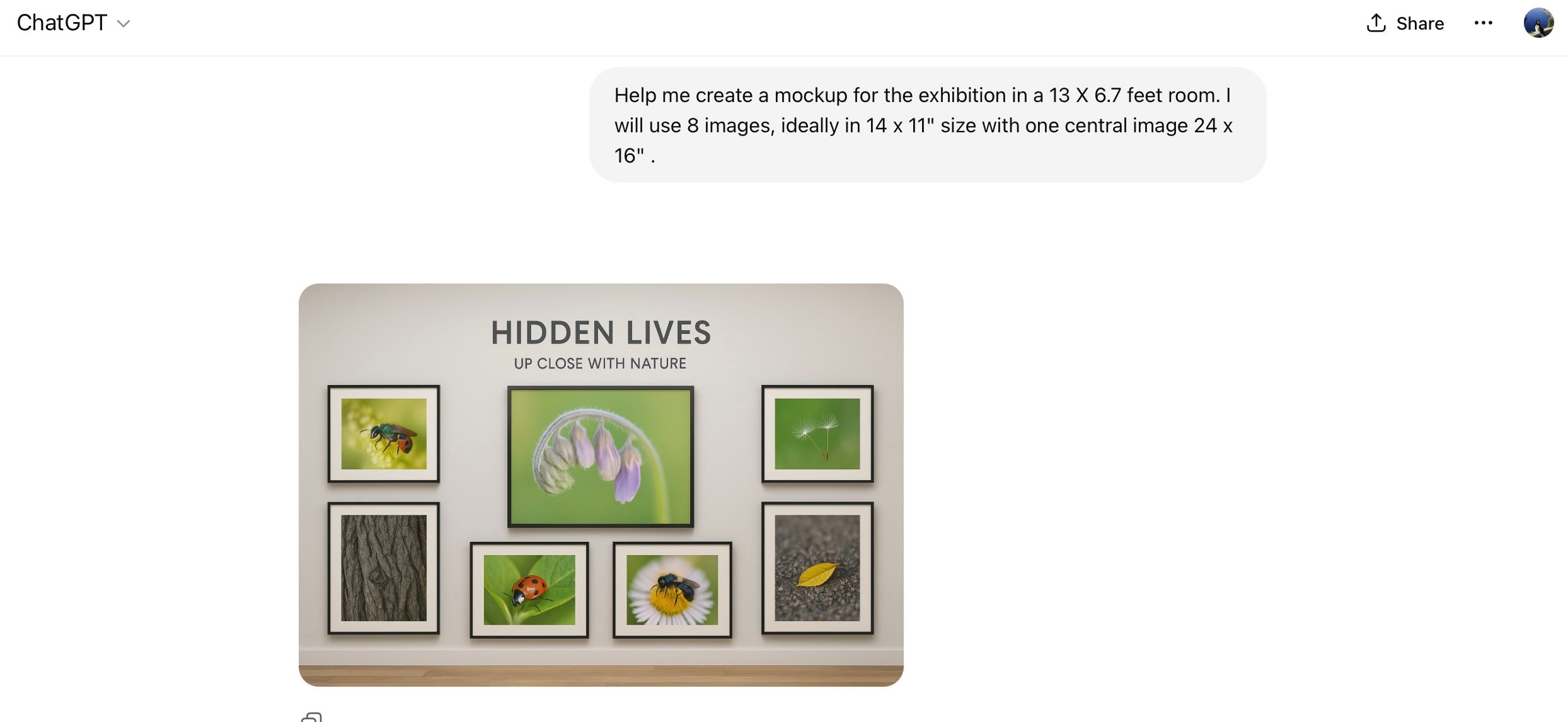
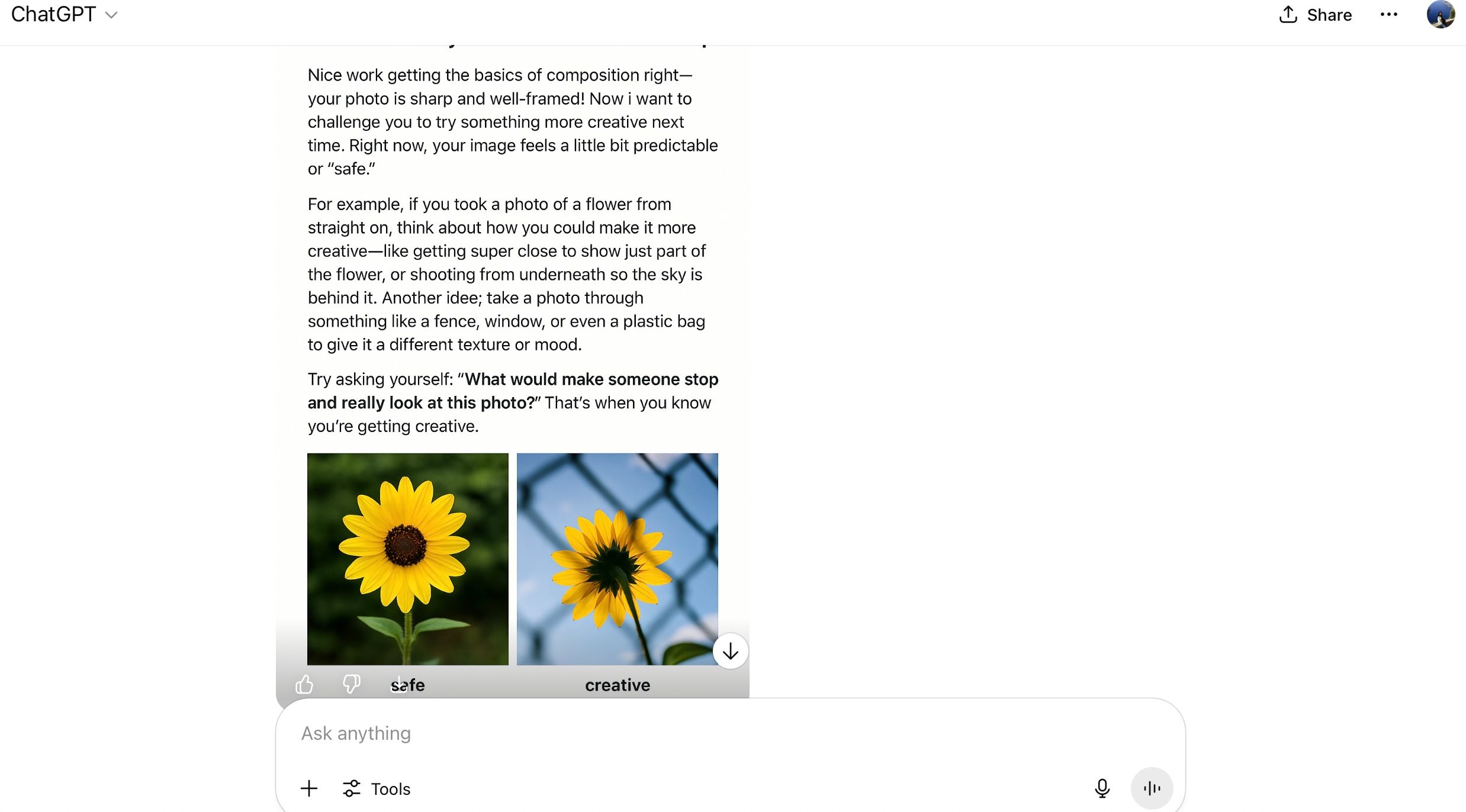
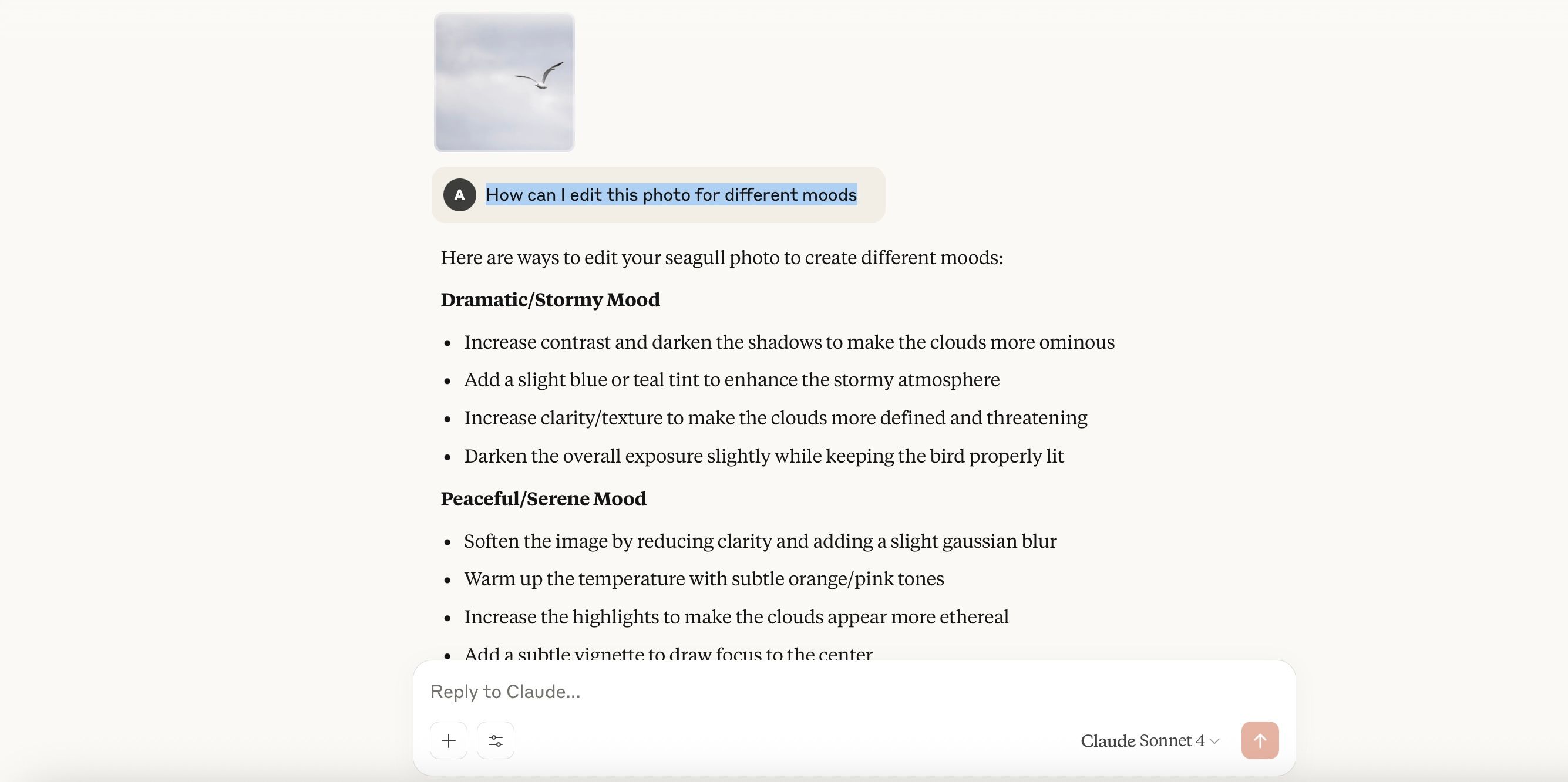
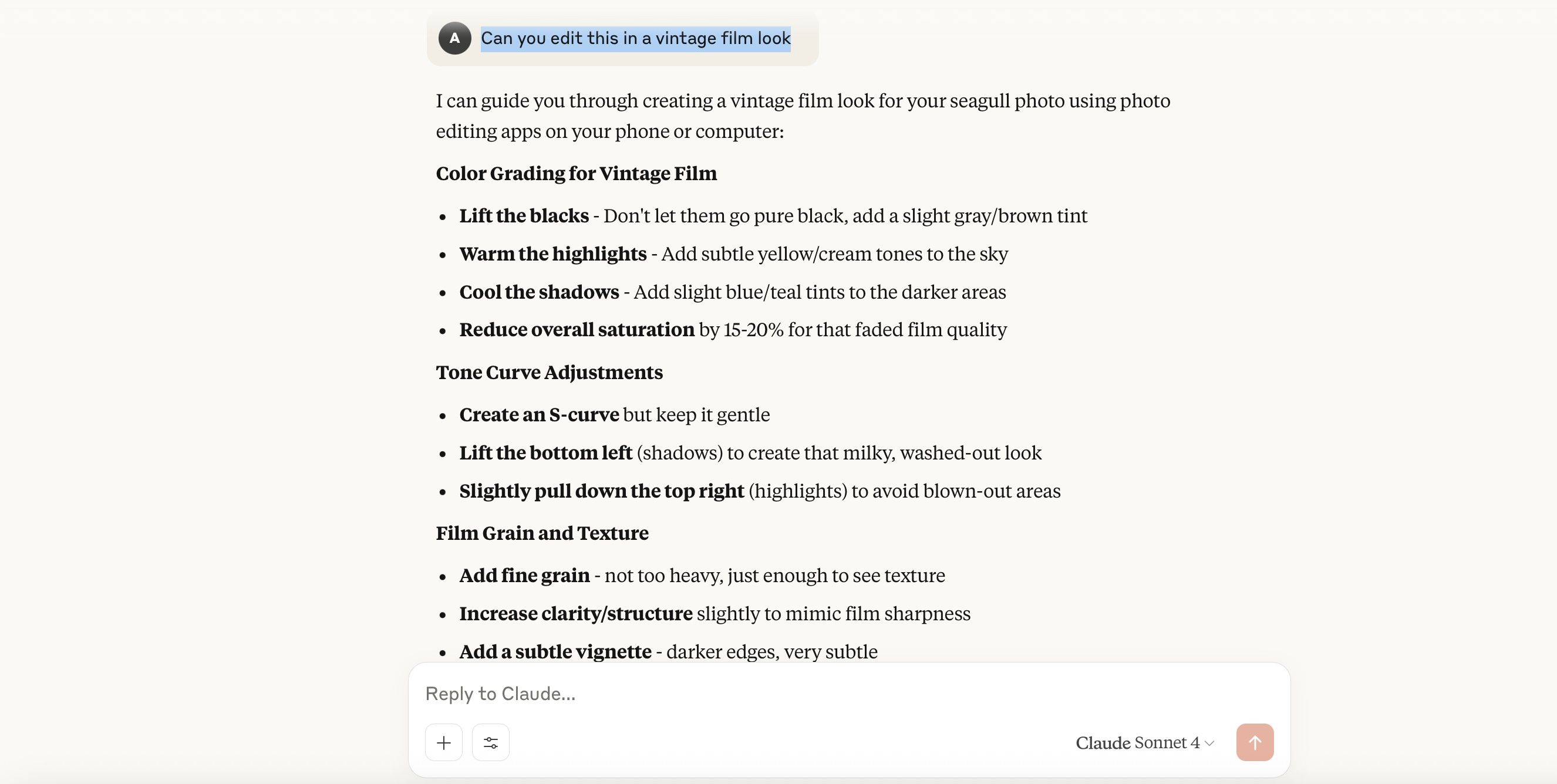


:max_bytes(150000):strip_icc()/GettyImages-1389670274-15c54b7ba36a4277b33611b14f567009.jpg?w=1174&resize=1174,862&ssl=1)


Leave a Comment
Your email address will not be published. Required fields are marked *